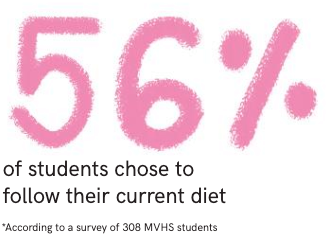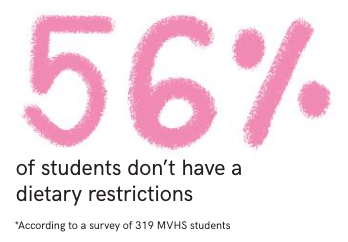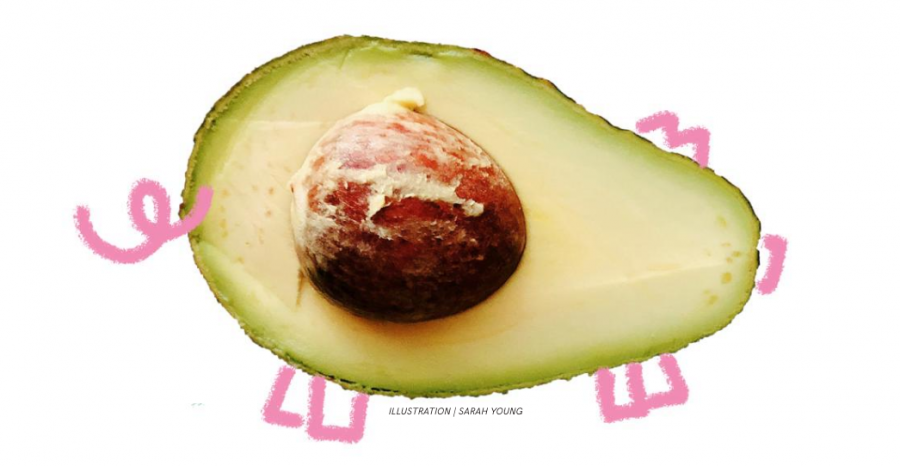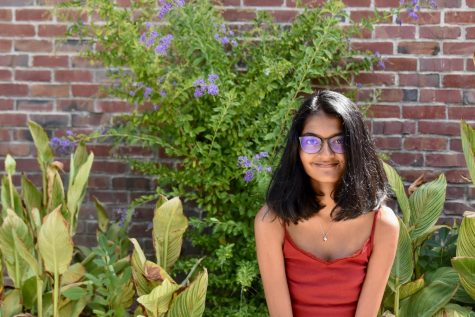MVHS community members unpack veganism’s negative stereotypes
February 6, 2020
Amid the chicken sandwich debates that emerged between popular fast food restaurants Chick-fil-A and Popeyes, an unlikely contender remained engraved in our minds — the Impossible Burger. Founded in 2011, Impossible Inc. wanted to create vegan burger patties that tasted and looked like ground beef. The idea behind the ImpossibleBurger was pushed into pop culture by the ever-present vegan subculture that has been gaining momentum over the past decade, according to Forbes, which found that the percentage of people eating vegan grew from one percent to six from 2014 to 2017.
Modern day veganism was founded by animal rights advocate Donald Watson, who defined the lifestyle as “a philosophy and way of living which seeks to exclude […] all forms of exploitation of, and cruelty to, animals for food, clothing or any other purpose.” However, the roots of veganism date back to ancient Indian and Mediterranean societies. The movement that was once perceived as tasteless and trendy now makes headlines in relation to issues like climate change, as going vegan can drastically decrease an individual’s carbon footprint, according to Oxford. Now, veganism has found its way into the diets of professional athletes, social media influencers and members of the MVHS community.
Drama and English teacher Hannah Gould reveals that it was a combination of ethics, her dislike of the taste of red meat, and the documentary “Forks Over Knives” that led to her dabbling with vegan meals. Her and her boyfriend’s frequent tinkering with cookbooks turned into a pure vegan diet without her even realizing it.
“[We] started cooking recipes from this one book called ‘Isa Does It’ and it’s an easy vegan recipe book,” Gould said. “The recipes were just so good that we just kept making more and more things from that book. Then we bought more books by the same author. And then we bought more vegan cookbooks. Gradually without really realizing it, we were just eating vegan.”
Gould explains that going vegan requires easy access to fresh produce, and in poorer neighborhoods, where the closest resources are a Walmart or a bodega, going vegan might even mean starvation. Veganism is also often perceived to be a movement for privileged people, which Gould attributes to remnants of socioeconomic and racial segregation from the past.
But going vegan presents its own set of constraints. While many of us may think of it as a feasible and easy transition, it goes beyond just buying vegetables and avoiding cheese. According to New York Times, fast food restaurants, for example, tend to be cheaper and accessible to people living in poorer neighborhoods, and most of the times the cheapest options contain meat. In fact, all of the sandwiches that fall under McDonald’s dollar menu contain meat. Sophomore Sahana Anand follows a vegan diet as well, but says there are stereotypes on eating vegan.
“When people say it’s a sign of privilege, I’m assuming they mean they can eat what they want and it’s easy for them to come by vegan products,” Anand said. “For me, I think if you’re privileged enough to be a vegan and you think it’s good for the environment, you should do it.”

Junior Sylvana Northrop, who calls herself a “flexible plant based eater,” explains that another reason why veganism has a negative image associated with it is because of organizations like People for the Ethical Treatment of Animals (PETA), as some of its members tend to “attack” meat-eaters for not being vegan, causing people to distance themselves from the diet thinking that it is too extreme.
“I think that it’s very unfortunate that there is such a negative stereotype on veganism because it’s really not that extreme thing of a thing to do,” Northrop said. “It is a small change that has a really big impact. I think that the stereotype on it is deterring people from even considering how great of an impact it can have.”
This “extremist” behaviour seen in mainstream media today paints vegans as villains of the food chain, as they are stereotyped as people who chastise others for eating non-vegan candy and riding bikes with leather seats. Northrop agrees that there are different levels of veganism and some may be more forceful in pushing out their agenda but at the end of the day, people should respect one another for trying to be more mindful of what they consume.
“Vegan[ism] is definitely an abstract concept,” Northrop said. “There’s different levels of veganism 一 some people feel that one person is more vegan than the other just because they don’t use leather. I think what’s most important in being able to call yourself vegan is that you’re making a conscious effort to avoid animal products in your daily life.”
Veganism has also been under fire by some people for prioritizing animal welfare while disregarding the livelihoods of farmers and other labourers who work in farms where vegan products are sourced.
 “Wherever you go, there is going to be people being exploited in everything you buy,” Northrop said. “It’s really difficult to be a completely guilt-free consumer. I think if you’re able to do the research on where your stuff is coming from, that’s great. If you’re not able to do the research [or] if you don’t have the resources, then I think just changing what you get is a step in the right direction.”
“Wherever you go, there is going to be people being exploited in everything you buy,” Northrop said. “It’s really difficult to be a completely guilt-free consumer. I think if you’re able to do the research on where your stuff is coming from, that’s great. If you’re not able to do the research [or] if you don’t have the resources, then I think just changing what you get is a step in the right direction.”
What it means to be vegan has evolved as the movement has grown. While the term can be interpreted in many ways, its main role is to offer consumers a healthier alternative to meat products and decrease the impact individuals contribute to climate change.
“There’s often a lot of pushback from people about our own food choices and I think veganism is great but I don’t criticize people for eating meat. I don’t tell them that they should be vegan,” Gould said. “A lot of people, when they find out that you eat vegan, they give you a really hard time and so I think that it’s just something for people to think about. Even if they have no interest in being vegan, maybe think about being tolerant toward people’s food choices.”


















